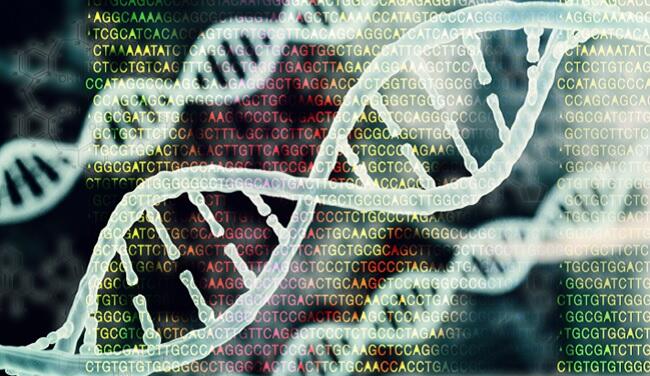Tohoku University Tohoku Medical Megabank Organization (ToMMo) completed the whole genome analysis of 100,000 out of the 150,000 general residents who cooperated in the Tohoku Medical Megabank (TMM) project and held a symposium regarding the genomic information of the 100,000 individuals and the future of personalized healthcare. ToMMo also released the full-length Japanese reference genome sequences and mitochondrial heteroplasmy panel. Sanae Takaichi, Minister of State for Healthcare Policy, said, "While the U.K., the U.S., and other countries are currently conducting projects on the whole genome analysis of the general population, this achievement of genome sequencing of 100,000 people is a significant contribution to the promotion of genomic medicine and drug discovery in Japan. I would like to again express my deepest respect to the Tohoku Medical Megabank Organization."

Masayuki Yamamoto, Executive Director of ToMMo, said, "The whole genome analysis of 100,000 people was accomplished with tremendous support from the government of Japan and a consortium of pharmaceutical companies, and is an important foundation for personalized medicine and prevention in Japan. We aim to make further enhancements so that many people can use it."
Whole genome reference panels of the general population will provide more refined information as the scale of analysis increases. For this reason, the UK Biobank in the U.K. and All for US in the U.S. are also conducting whole genome analysis of the general population. These data are provided to researchers in industry and academia for use in drug development and the advancement of medicine. To date, the whole genome analysis of 500,000 people and 250,000 people have been completed in the U.K. and the U.S., respectively. The analysis of 100,000 people completed by ToMMo in Japan has now provided one of the largest genome data sets in the world. In addition to support from the national government and the Ministry of Education, Culture, Sports, Science, and Technology, the data of the released genome analysis were acquired with great support from the Consortium for Integrated Analysis of Whole Genome Information and Medical and Health Information. This Consortium was established in March 2021, of which members are five pharmaceutical companies (Eisai, Ono Pharmaceutical, Daiichi Sankyo, Takeda Pharmaceutical, and Janssen Pharmaceutical). TMM plans to sequentially release whole genome reference panels that include the positions and frequencies of genetic polymorphisms (variants) based on the whole genome information acquired. The reference panel based on the data of 85,000 people is scheduled to be released by autumn.
Meanwhile, the human genome sequence consists of about 3 billion base pairs, of which about 2.7 billion have been determined. However, the sequences of the telomere regions at the ends of chromosomes, the centromere region at the center of chromosomes, and the heterochromatin region located around them were unknown. ToMMo has also constructed and published JG1, JG2, and JG2.1 as Japanese reference genome sequences, but 300 million base pairs in the above regions remained unknown. A research team led by Associate Professor Jun Takayama, ToMMo, has sequenced most of these remaining regions and published the data as the Japanese reference genome sequence JG3. JG3 allows for the analysis of almost all genome sequences. The mitochondrial DNA sequences of 8380 individuals were analyzed, and the percentages of intra-individual mutations were published as a mitochondrial heteroplasmy panel. The panel is expected to contribute to the clarification of the mechanisms of diseases caused by mitochondrial DNA variants. The newly constructed Japanese reference genome sequence JG3 and the mitochondrial heteroplasmy panel are publicly available as part of the Japanese multi-omics reference panel jMorp, a database operated by ToMMo.
Professor Kenjiro Kosaki of the Keio University School of Medicine said at the symposium, "I will never forget the excitement I felt when I first downloaded the data." He introduced the cases where such reference genome sequences helped confirm the diagnoses of patients with undiagnosed intractable diseases and the cases where the patients responded to treatment methods reported to be effective in patients with intractable diseases in foreign countries who had similar genetic mutations in their genomes. "It is highly significant that this is made available to the world free of charge," he continued.
The development of the TMM plan is directly related to national interests. TMM stores not only genome information but also information on lifestyle habits collected via questionnaires and various laboratory values. Furthermore, TMM also stores blood and other samples on a continuous basis for the long term. A three-generation cohort study mainly involving pregnant women, their children, and grandparents of the children is also being conducted. The value of such information increases with the size of the cohort and the length of the data collection period. For example, the detection of blood biomarkers for dementia and other diseases during or before the preclinical stage is important for drug treatment and other medical interventions. TMM's blood samples from the general population will contribute significantly to the development of therapeutic agents and other medical intervention tools. Further development of TMM, which will complete its third phase next fiscal year, will benefit the national interest directly.
This article has been translated by JST with permission from The Science News Ltd. (https://sci-news.co.jp/). Unauthorized reproduction of the article and photographs is prohibited.




